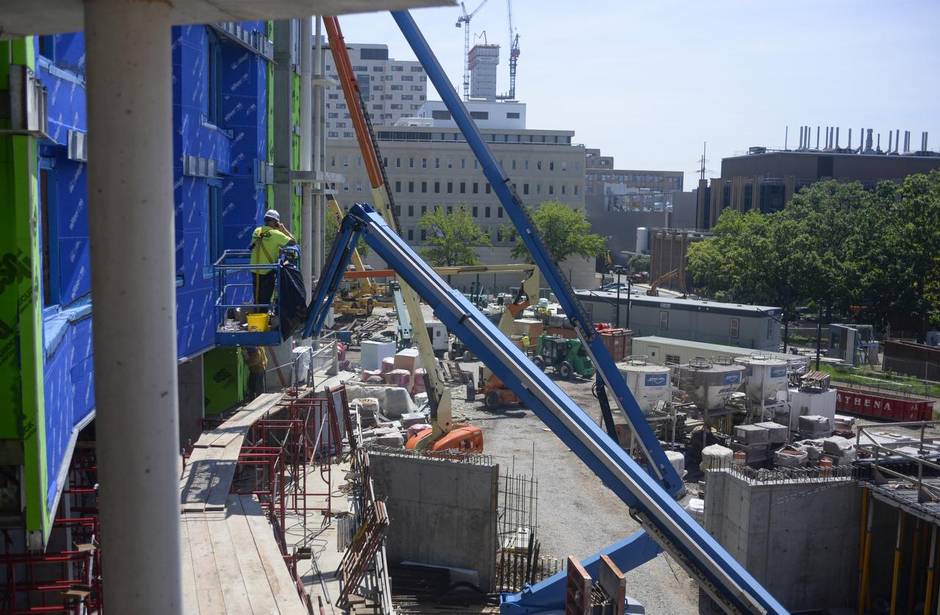Construction jobs on the upswing

PHILADELPHIA — Brian Martin, 33, almost gave up on being a bricklayer during the recession. He loved the work but couldn’t get any, so he joined the vast army of construction workers rendered jobless by the worst economic downturn since the Great Depression.
“I thought about going back to school,” said Martin, taking a break from work at the University of Pennsylvania’s newest dormitory.
Up on the scaffolding, Rocco D’Angelico, 59, said he managed to keep working as a bricklayer during the recession, but now he’s looking toward retirement because of “all the aches and pains in my bones.”
Together, D’Angelico and Martin represent the two forces — recession and retirement — that explain why construction jobs are among the occupations projected to grow the most and the fastest in the next decade.
Every two years, the Labor Department’s Bureau of Labor Statistics issues a report on the nation’s fastest-growing occupations, with the latest projecting job growth to 2022. The next, projecting jobs to 2024, is expected in December.
Nationally, laborers and carpenters are expected to add 478,000 jobs by 2022, the BLS projected.
On any building site, carpenters and laborers are the two categories of workers most needed, so it’s no surprise that they would be the most needed in the future.
On a percentage basis, however, some of the specialty trades, such as the work done by bricklayers D’Angelico and Martin, are projected to see the fastest growth.
Brick- and stone-laying occupations are expected to grow by 35 percent, with 25,200 needed by 2022. Other fast-growing jobs in the building trades are insulation workers, brick-mason helpers and pavement layers.
“We have 120 apprentices starting in September,” said Dennis Pagliotti, president of Local 1 of the Bricklayers and Allied Craftworkers union in Philadelphia. “We’re at full employment.”
With more recruiters coming each year, every senior enrolled in the Williamson College of the Trades’ carpentry and masonry programs in suburban Philly had at least one job offer by their May graduation, said Michelle Martella, the school’s development officer.
Economist Bernard Markstein of Markstein Advisors tracks construction employment for the nonunion contractors’ national association, Associated Builders and Contractors Inc.
“A lot of people exited the construction industry” during the recession, Markstein said. “When the housing bubble was popped, you were laid off — it wasn’t a few months, it was several years.
“Some [workers] moved and went to the energy industry. Some were able to get related jobs in manufacturing,” he said. “Some of them took the huge proverbial pay cut. Some older workers retired.
“As construction is coming back, the retired people are five years older. They aren’t going to re-enter. Some who got stable work [in other fields] aren’t willing to give it up,” Markstein said.
During the recession, he said, contractors kept their best employees but didn’t build a pipeline.
“They have gone five years without training new people [while also] losing the trained people,” he said. “The result is … there is a shortage of skilled labor.”
An “overwhelming majority” of contractors surveyed in December by the union group, the Association of General Contractors, said they planned to expand their payrolls in 2015 and 2016.
Average weekly hours for construction workers rose to 39.9 hours in June, the highest weekly June rate since the statistic was first tracked in 1947, the group reported. Unemployment in the trades fell to its lowest level since 2001.
Jane M. Von Bergen,
The Philadelphia Inquirer












